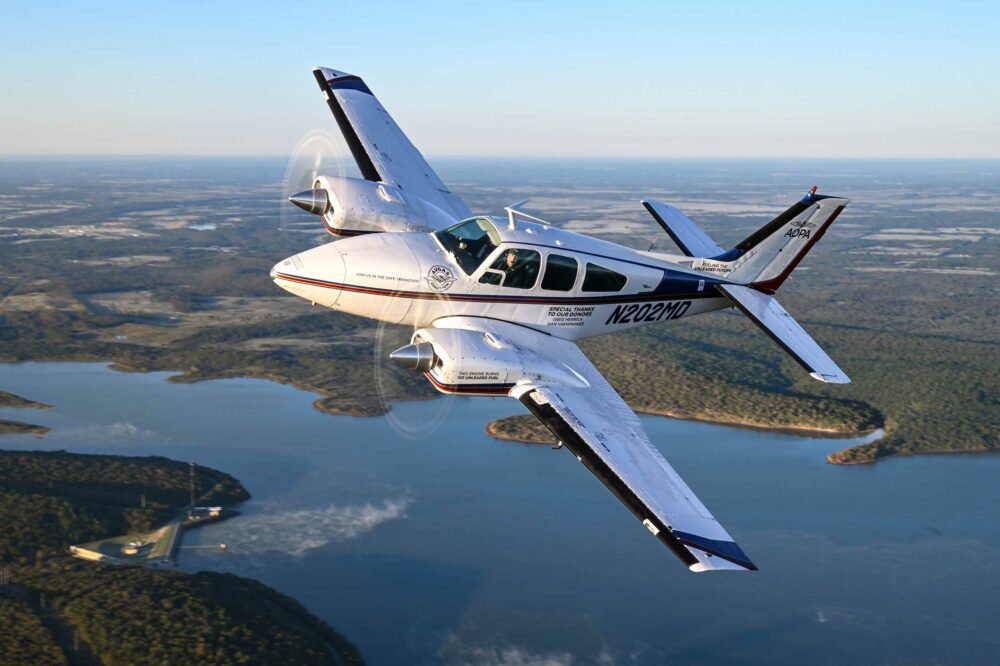How do you conduct a real world comparison of unleaded and leaded fuels and eliminate as many variables as possible? Simple, fly a twin engine aircraft with the two fuels going to separate engines.
That’s exactly what the Aircraft Owners and Pilots Association (AOPA) in the US is doing over the next two years.
The association has leased a refurbished 1966 Beechcraft Baron with two freshly overhauled, normally aspirated Continental IO-520 engines. It will operate the aircraft with leaded 100LL avgas fuelling the starboard engine, and 100 octane unleaded supplying the port engine.
The unleaded fuel is G100UL developed by General Aviation Modifications Inc (GAMI) and has received a Supplemental Type Certificate (STC) from the FAA. AOPA says that as other 100-octane unleaded fuels become available it will test those too.
“We want to get some actual experience with 100 octane unleaded fuel in the kinds of airplanes and engines that our members own and fly,” said AOPA President Mark Baker. “This fuel has been tested extensively in labs and received an STC. Should the FAA authorize additional fuels, we’ll test them, too, so we can see what they’re like to use out on the airways.”
According to AOPA, Baker, an experienced Baron owner and pilot, flew the AOPA fuel demo Baron for one hour with G100UL feeding the left engine and 100LL in the right. He said the performance of the two engines was nearly identical and the Baron flew beautifully. The flight included several full-power takeoffs and a prolonged high-power cruise at more than 75 per cent power.
The Baron’s engines will undergo regular borescope inspections and compression tests to compare internal engine wear.
“The move to unleaded fuel is absolutely critical to the future of general aviation,” Baker said. “This airplane is a valuable tool because it can help us make the transition safely and confidently.”
GAMI G100UL fuel












